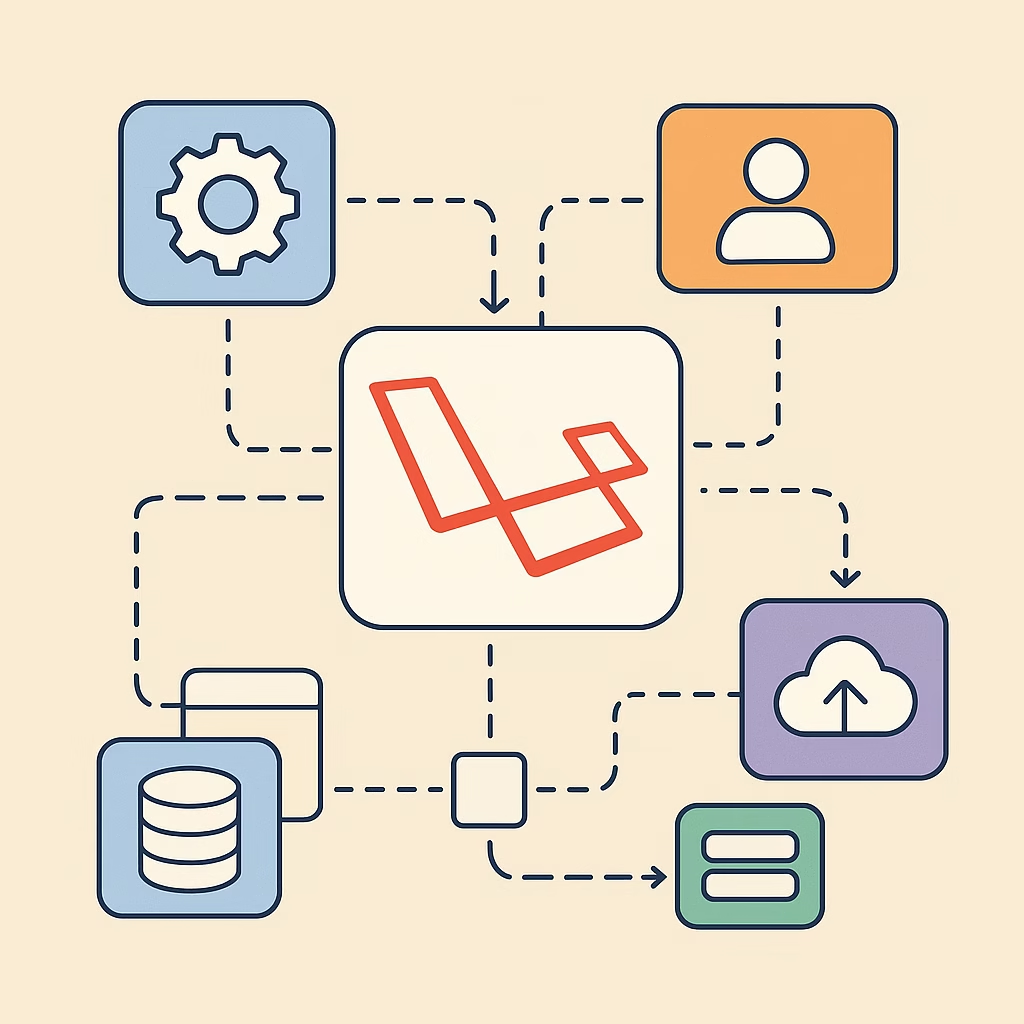Over the past few years, I’ve been working with Laravel in a microservices architecture, building smaller, independent services instead of one big monolith. At first, I assumed Laravel was “too heavy” for this style of development—that it was better suited for large, monolithic applications. But as I experimented more, I quickly discovered that Laravel’s ecosystem actually makes it an excellent fit for microservices.
That said, the journey wasn’t without its bumps. Microservices bring new challenges around communication, data ownership, authentication, and deployment. Laravel provides strong foundations, but it doesn’t magically solve all of these complexities on its own.
In this post, I’ll share the most important lessons I’ve learned while building microservices with Laravel—what worked, what didn’t, and how to avoid some of the mistakes I made along the way.
1. Don’t Jump into Microservices Too Soon
Laravel makes it fast to build features in a monolith, and honestly, most projects should start that way. Microservices introduce overhead: separate deployments, service discovery, network failures, and data ownership issues.
When I started, I tried splitting too early and ended up creating services that were basically “mini-monoliths.” It slowed down development and caused unnecessary complexity.
Lesson: Use a monolith until scaling or domain separation forces your hand. Let your system grow into microservices organically.
2. Define Clear Boundaries Between Services
Microservices work best when each service has a clear responsibility. For example:
-
Auth Service → Handles login, registration, tokens
-
Billing Service → Processes payments, invoices, subscriptions
-
Notifications Service → Sends emails, SMS, push notifications
In Laravel, it’s tempting to share models and logic between services, but that leads to tight coupling. Instead, each service should own its own database and business logic.
Lesson: If two services share the same database tables, you don’t have microservices—you just have a distributed monolith.
3. Communication: REST vs. Events
Laravel’s API resources make building REST endpoints easy, but REST-only communication creates a lot of service-to-service dependencies. When one service goes down, others might fail.
I learned that event-driven architecture is a lifesaver. With queues (Redis, RabbitMQ, Kafka), services can publish and subscribe to events without directly depending on each other.
Example:
-
The Billing Service publishes a
PaymentCompletedevent. -
The Notifications Service listens and sends a receipt email.
-
The Analytics Service logs the transaction.
No direct API calls needed.
Lesson: Use REST for critical synchronous operations, but rely on events/queues for cross-service communication.
4. Authentication and Authorization
Managing auth across services can get messy. Initially, I duplicated Passport/Sanctum logic across services—big mistake. Tokens weren’t consistent, and debugging was painful.
The fix was to centralize authentication into its own service. The Auth Service issues JWT tokens (via Passport/Sanctum), and other services simply validate them.
That way:
-
Users log in once.
-
Tokens are stateless and portable.
-
Each service just checks validity (no duplicated logic).
Lesson: Don’t let each service reinvent authentication. Centralize it.
5. Shared Packages > Code Duplication
In microservices, you’ll often need shared logic (like DTOs, helper functions, or exception formats). Duplicating them across services quickly becomes unmanageable.
Instead, I started extracting common logic into private Composer packages. This way, services share code but still stay decoupled.
Lesson: Package shared functionality. Don’t duplicate it across services.
6. Monitoring, Logging, and Tracing Are Critical
Debugging in a monolith is easy—tail one log file. In microservices, it’s chaos without centralized logging.
What worked for me:
-
Laravel Telescope → Great for local debugging.
-
Sentry or Bugsnag → Captures exceptions across services.
-
ELK (Elasticsearch, Logstash, Kibana) → Aggregates logs.
-
OpenTelemetry/Jaeger → Distributed tracing to follow a request across services.
Lesson: Invest in observability early. Without it, debugging becomes a nightmare.
7. Database Per Service (But Be Smart About It)
One of the hardest lessons: each service should have its own database.
Why?
-
Prevents coupling.
-
Makes scaling easier.
-
Improves fault tolerance.
But splitting too aggressively can slow you down. For example, reporting/analytics might still need a centralized data warehouse or read replica.
Lesson: Own your data per service, but consider read-only replicas or ETL pipelines for cross-service queries.
8. Deployment and Scaling with Containers
Managing multiple Laravel services manually is painful. Docker changed everything for me:
-
Each service has its own Dockerfile.
-
CI/CD pipelines (GitHub Actions, GitLab CI, or GitHub Workflows) build and deploy automatically.
-
Kubernetes (or Docker Swarm) handles scaling.
Instead of scaling one giant monolith, I can scale specific services (e.g., the Notifications Service during peak email sending).
Lesson: Containerize from the start. Automate deployments and scale at the service level.
9. Versioning and Backward Compatibility
In a monolith, refactoring an API is easy because everything’s in one place. In microservices, breaking changes ripple across the system.
I learned to:
-
Version APIs (
/api/v1/...,/api/v2/...). -
Keep old versions alive until consumers migrate.
-
Use feature flags to roll out changes gradually.
Lesson: Always think about backward compatibility. Breaking one service can break the whole system.
10. Laravel Is Still a Great Fit
Even though Laravel wasn’t built for microservices, it shines because:
-
Eloquent makes database interactions easy.
-
Queues integrate seamlessly with Redis/SQS/RabbitMQ.
-
Authentication (Passport/Sanctum) is battle-tested.
-
Ecosystem (Horizon, Telescope, Cashier, etc.) reduces boilerplate.
Instead of thinking of Laravel as “too heavy,” I realized its ecosystem saves time when spinning up new services.
Lesson: Laravel is flexible enough for both monoliths and microservices. Use it wisely.
Final Thoughts
Microservices aren’t a silver bullet. They add complexity, and if you’re not careful, you’ll end up with a distributed monolith that’s harder to manage than your original app.
But if you:
-
Start small and split gradually,
-
Define clear service boundaries,
-
Use event-driven communication,
-
Centralize authentication, and
-
Invest in monitoring and automation early—
Laravel can absolutely power a microservices architecture.

Leave a Reply